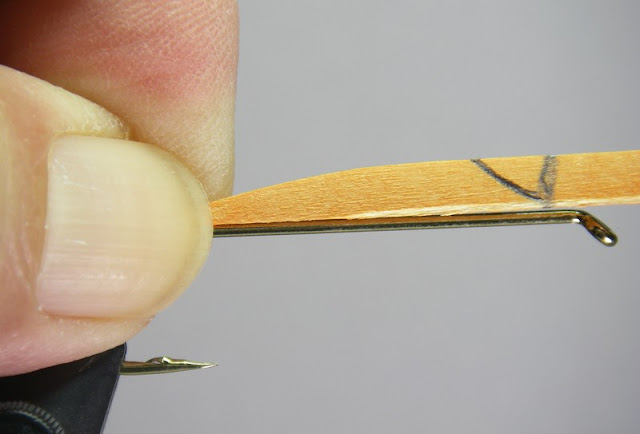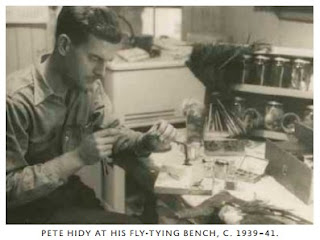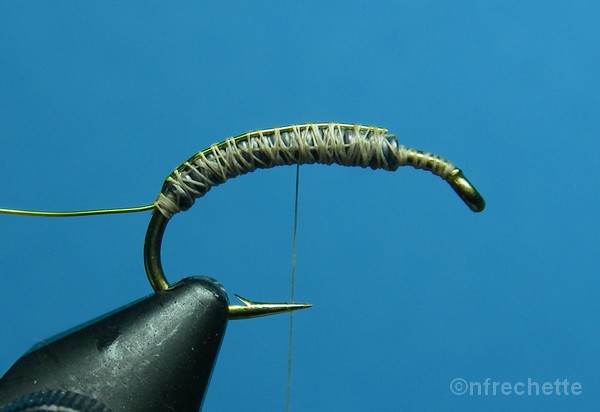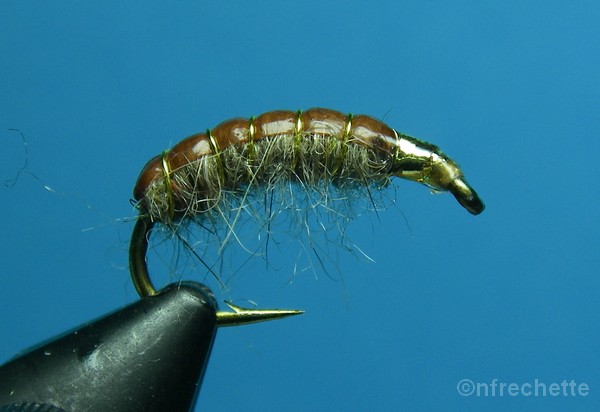The "A. P." in this fly's name could stand for either "All Purpose" or the inventor, André Puyans. A generic nymph, it looks like a lot of things that live underwater and get eaten by trout. You can weight the fly with lead under the body or with a beadhead.
The following step-by-step tying process will assist you in tying the A.P. series nymphs.
The unique manner in which they are tied can be incorporated into many other patterns.
A.P. Nymph
Additional Recipes
A.P. Beaver Nymph
Hook: Mustad 3906B or equivalent
Thread: Black
Tail , Wingcase & Legs: Dark Moose Hair
Ribbing: Gold Wire (copper can also be used)
Body & Thorax: Dubbed Beaver Fur
Head: Dubbed Beaver Fur
A.P. Black Beaver Nymph
Hook: Mustad 3906B or equivalent
Thread: Black
Tail , Wingcase & Legs: Dark Moose Hair
Ribbing: Gold Wire (copper can also be used)
Body & Thorax: Dubbed Black Beaver Fur
Head: Dubbed Black Beaver Fur
A.P. Claret & Beaver Nymph
Hook: Mustad 3906B or equivalent
Thread: Black
Tail , Wingcase & Legs: Dark Moose Hair
Ribbing: Gold Wire (copper can also be used)
Body & Thorax: Dubbed blend of 40% medium color beaver,
20% claret synthetic for, 20% seal brown synthetic fur & 20% hares ear
Head: Dubbed with body blend
A.P. Hendrickson Nymph
Hook: Mustad 3906B or equivalent
Thread: Brown
Tail , Wingcase & Legs: Bronze mallard
Ribbing: Gold Wire (copper can also be used)
Body & Thorax: Dubbed dyed reddish brown beaver or synthetic fur
Head: Dubbed with body blend
A.P. Muskrat #1
Hook: Mustad 3906B or equivalent
Thread: Gray
Tail , Wingcase & Legs: Blue Dun Hackle Fibers
Ribbing: Gold Wire (copper can also be used)
Body & Thorax: Dubbed dark muskrat fur taken from the back of the muskrat
Head: Dubbed with body blend
A.P. Muskrat #2
Hook: Mustad 3906B or equivalent
Thread: Gray
Tail , Wingcase & Legs: Moose Body Hair
Ribbing: Gold Wire (copper can also be used)
Body & Thorax: Dubbed dark muskrat fur taken from the back of the muskrat
Head: Dubbed with body blend
A.P. Olive Nymph
Hook: Mustad 3906B or equivalent
Thread: Brown
Tail , Wingcase & Legs: Dyed olive barred mallard
Ribbing: Gold Wire (copper can also be used)
Body & Thorax: Dubbed dyed olive beaver or synthetic fur
Head: Dubbed with body blend
A.P. Peacock & Pheasant Nymph
Hook: Mustad 9671 or equivalent
Thread: Black
Tail , Wingcase & Legs: Ringneck Pheasant center tail fibers. Select so that dark center portion covers wingcase area.
Ribbing: Copper Wire
Body & Thorax: Peacock herl
Head: Black tying thread
Tying Notes/Suggestions
Add a bead to make it a beadhead style fly
Add flash to make it a flashback style nymph
Try different colors & sizes to match the hatch
Try natural as well as synthetic dubbing
Tie the wing case similar to the Copper John
Use tinsel only as the wing case
Use your favorite hook
Try tying this pattern on a curved hook
Tie a light colored abdomen/dark colored thorax
Tie it with an all wire abdomen
Tie it weighted or unweighted
Use your favorite weighting material (lead or non lead)
You can weight the entire shank or just the thorax area
Dubbing the tiny heads on these patterns is optional
Length of tails should equal 1 to 1 1/2 times the hook gap
Tying techniques associated with this pattern
Wrapping thread on hook
Wrapping lead wire on hook
Tailing
Ribbing
Dubbing on thread and wrapping dubbed body, thorax & head areas
Wingcases
Creating legs
Disclaimer
The fly and recipes on this page is simply a demonstrated method of tying a fly.
Every fly tyer has his or her very own tying style which allows them the freedom to tie how and what they want and not stick to predetermined rules but to be creative..








































